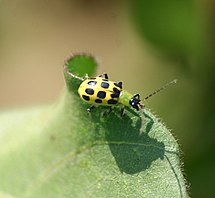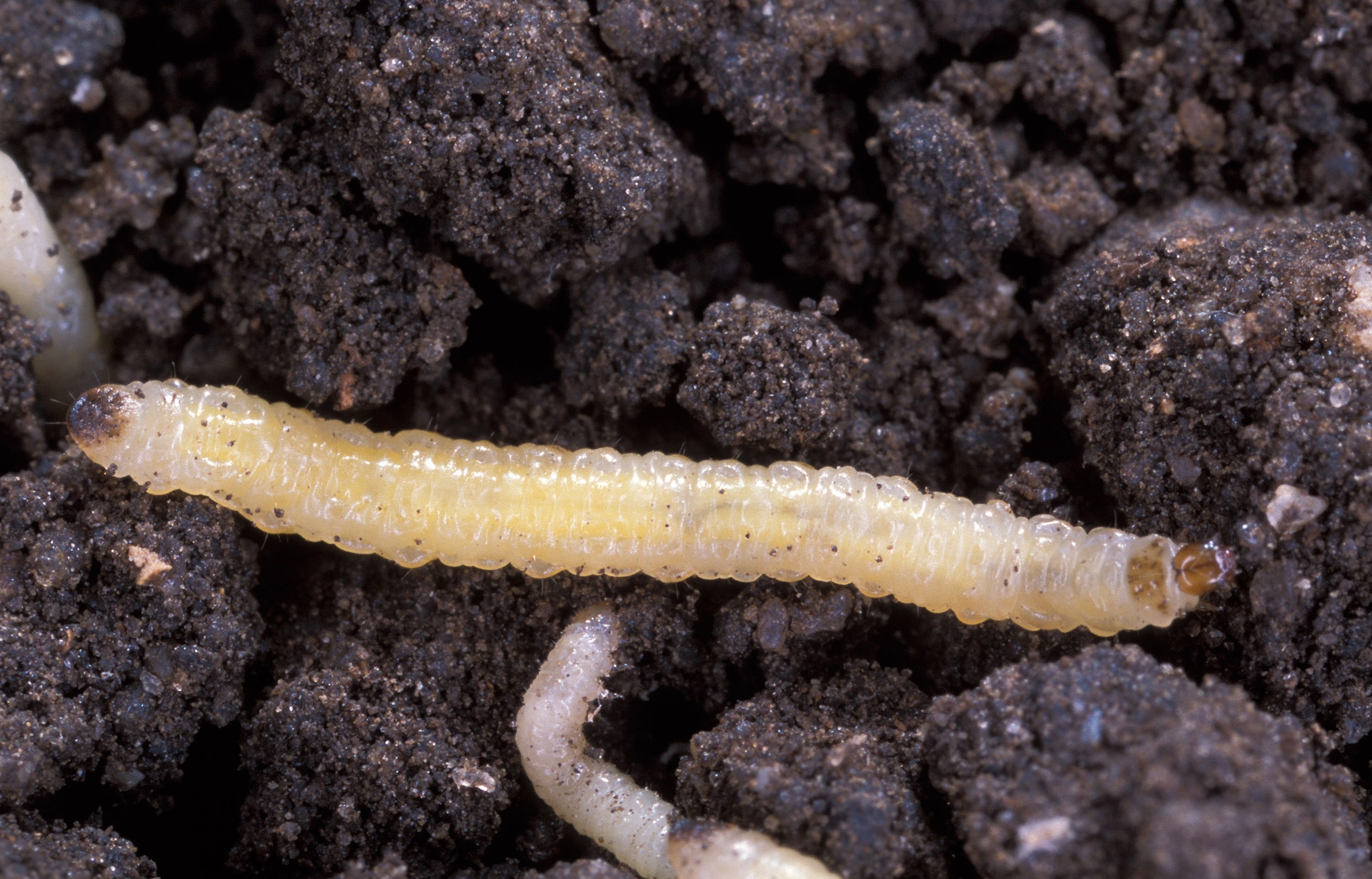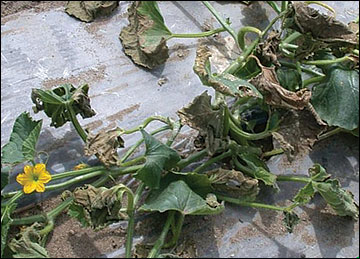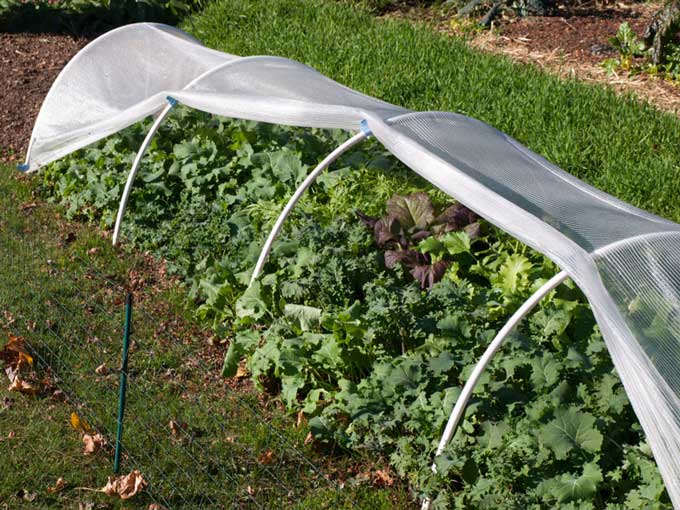The likely culprits? Diabrotica undecimpunctata (The Spotted Cucumber beetle) and Acalymma vittatum (The Striped Cucumber Beetle); Two beetles that belong to the same family (Chrysomelidae).
 |
| Diabrotica undecimpunctata (Spotted Cucumber Beetle) |
 |
| Acalymma vittatum (Stripped Cucumber Beetle) |
Both are commonly referred to as the Cucumber Beetle and both cause similar damage to vegetable leaves. The striped cucumber beetle is about 1/5 inch long with black head and wings striped with yellow and black. The spotted cucumber beetle is about 1/4 inch long and has a black head and black legs with a yellowish-green body and wing covers with 12 distinct black spots. The larva stage of both species live in the soil and feed on the underground parts of plants.
 |
| Larvae of the Cucumber Beetle |
The Stripped Cucumber Beetle over-winters in Illinois, while the Spotted Cucumber Beetle migrates from the south. In the spring, the beetles start to feed on leafy vegetable greens. While feeding on a plant, the adults will lay eggs at the base of the plant. The larva of the Spotted Cucumber Beetle is also called Southern Corn Rootworm, but both larva will feed on the base and the roots of plants. Besides the damage cause to the leaves by the adults, and the damage to the roots by the larvae, the adults also spread the bacterial wilt disease Erwinia tracheiphila.
 |
| Damage to cucumber from Erwinia tracheiphila |
So how can these little monsters be stopped? Organically, there are two common ways:
Polyester Row Covers
 |
| Polyester row covers protecting salad greens |
Castille-Soap Spray Solution
To make this solution for use in the community garden, it is VERY important for ya'll to use an organic soap (this does not include Dawn, sorry!). The one that will most likely be easiest to find would be Dr. Bronner's Castile Liquid Soap. The closest place in Glenview to find it would be at Whole Foods or Target in the Beauty Products aisle.
 |
| Dr. Bronner's Castile Liquid Soap |
If you cannot find Dr. Bronner's Castile Liquid Soap, any other kind of organic, Castile soap will work for this solution. The spray can also be used on other insect pests, such as the Japanese Beetle (Popillia japonica)
Related Links:


No comments:
Post a Comment